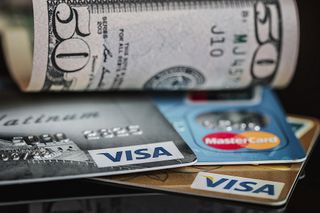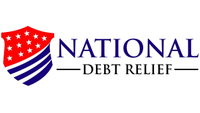Recent analysis (opens in new tab) by American Consumer Credit Counseling Inc (ACCC) revealed that American households struggling with debt have average credit card balances of more than $22,000. These alarmingly high levels of debt can cause those affected to feel overwhelmed, stressed and depressed. Knowing how to get your finances back on track is key to clearing what you owe and easing your money worries. Below are seven steps you can take to help tackle your credit card debt, before you need to start consulting debt consolidation companies (opens in new tab).
1. Work out what you owe
The first step is to make a list of all the credit cards you owe money on. Get together all your paperwork, emails and online accounts and make a note of the name of each credit card company, the total balance on each credit card, the minimum payment you need to make each month and the rate of interest you are paying. You need to know how big the problem is before you can actually start to tackle it.
2. Create a budget
Next, identify how much money you have coming in each month, and how much you spend each month on bills and mortgage or rent payments, as well as other expenses such as groceries and entertainment. Look to see if there is anywhere you could make cutbacks – could you eat out less, for instance, or could you cancel your gym membership? Could you get a cheaper network deal with one of the best cell phone providers (opens in new tab)? Once you’ve highlighted where you can make cutbacks, you should have extra cash to put towards your credit card payments. Establish how much you can afford to pay each month and stick to this budget. Whatever you do, don’t keep spending on your credit cards as this will undo any progress you make.
3. Pay off more than the minimum
Most credit card companies only ask for a minimum payment to be made each month, but these payment levels are typically set very low. You may be asked to pay a fixed payment of around $20 each month, for instance, or a percentage of your balance such as 1% to 3%. Only paying the minimum each month means it will take a long time to clear your credit card balance, and the interest you pay overall could be substantial. Instead, try to overpay whenever you can – use the cash you’ve saved from making cutbacks to help with this. Overpaying - even if it’s only by a few extra dollars each month - will help you clear your debt faster and more cheaply and it will lower your debt-to-income ratio (opens in new tab). Just ensure there is no penalty for early repayment and factor this into your overall bill if there is.
4. Set up automatic payments
Missed or late credit card payments can be costly. According to the 2019 US News Consumer Credit Card Fee Study (opens in new tab), a credit card company can charge up to $28 for the first late payment, but up to $39 if you are late a second time within the next six billing cycles. Late payments can also harm your credit rating and trigger a penalty APR which means you’ll pay more in interest. To give you peace of mind and ensure you are not charged unnecessarily, set up automatic payments on your accounts so that you remember to pay on time, each month.
5. Switch to a 0% APR balance transfer credit card
A report by the Consumer Financial Protection Bureau (CFPB) shows that balance transfer credit cards continue to grow in popularity among Americans, with balance transfer activity increasing by 38% since 2015. A 0% APR balance transfer credit card can be a useful tool if you have a lot of credit card debt as it allows you to transfer existing card balances across and avoid paying interest for a set number of months. This can be up to 18 billing cycles in the best cases. Using a 0% APR credit card can help you clear your debt more cheaply and at a faster rate, but this option should still be considered carefully. If you are unable to clear your balance before the 0% introductory APR period ends, you will start paying interest at the standard rate. You will also pay a transfer fee of around 2% to 5% of the balance, and the best deals are only offered to those with good credit. If you can’t get a 0% APR credit card, talk to each of your credit card companies to see if you can negotiate a lower interest rate.
6. Prioritize your payments
If you have debt on multiple credit cards, it is a good idea to assess which card has the highest interest rate and focus on paying that off first. Put as much extra cash as you can towards that card and keep paying the minimum on the others. Once you have paid off the first card, start focussing on the card with the second highest interest rate and so on. This snowball effect can help you to clear your debt more cheaply. An alternative method is to focus on paying off the credit card with the lowest balance first, while still making the minimum payments on the other cards. It is not as cost-effective as the first method, but it is a quick way to clear debt on one credit card and can help you feel like you’ve achieved something.
7. Seek professional help
If your credit card debt is spiraling out of control, don’t bury your head in the sand - make sure you seek professional help. We recommend speaking to National Debt Relief (opens in new tab) if you are worried about how much credit card debt you have. It offers a range of services to help customers manage their finances and can help you find the right debt resolution option for your needs. You may also want to consider credit counseling (opens in new tab). Credit counselors can help you establish a budget but also offer debt management plans to help you clear your debt. Some can even stop interest charges and late payment fees. If this doesn’t suit you, debt settlement may be a better option, but it is a big decision and it is important to do your research first. Read our guide to the best debt settlement companies to help you decide. Remember, the sooner you seek professional help, the sooner you can get your finances back on track.

